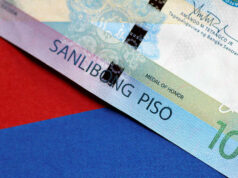Poultry industry maintains 2019 growth target
AN ASSOCIATION of poultry farmers has maintained its 2019 growth target at 5-10%, with prices rising due to a shift to chicken consumption prompted by the African Swine Fever (ASF) outbreak in the Luzon hog population.
United Broilers and Raisers Association (UBRA) President Elias Jose M. Inciong said in a phone interview that the main constraint is obtaining financing, which will determine the extent of any farmer’s expansion.
“Historically, the expansion potential is 5% to 10% depending on financing capability… Small and medium-sized players, because of limitations in financing, can achieve a maximum of 5%.”
According to the Philippine Statistics Authority (PSA), the chicken industry accounted for 14.72% of the total value of agriculture output, equivalent to P25.941 billion, in the third quarter.
In the third quarter of 2017 and 2018, the industry accounted for 13.27% and 13.96%, respectively.
Volume of production grew 8.48% to 465,150 metric tons (MT) during the third quarter of 2019.
The PSA noted that increased production was brought by increased demand as consumers shift from pork to chicken due to the ASF outbreak.
“There is an improvement in the price because of the shift in demand and also there is a increase in the volume of chicken… and that would account for the growth,” Mr. Inciong said.
However, he warned raisers to be cautious in expanding production since the shift in demand may later be reversed. A chicken glut is possible if high prices attract excessive expansion.
“My concern is because farmgate price of chicken is high… everybody will transfer to a (product) where prices are now high.. and there will be glut there,” he said.
“If there are new entrants who do not know what they are doing… and they will come in a major way, it will disrupt prices, prices will go down, because they think the broiler industry is a simple industry,” he added.
The average price of chicken has been above P100 per kilo as the ASF scare escalated in September. Based on the weekly price monitoring of UBRA, as of Nov. 8 the average price of regular-sized chicken was P111.50 per kilo, down 0.44%, week-on-week. The price of prime-sized chicken was P112.21 per kilo, down 0.7%, week-on-week.
He also warned of increased chicken imports because of government inflation-control policy that encourages keeping prices low.
“The government has decided that importation is a priority (over) production and therefore we expect because of this increase in prices, we expect the government to again help importers, supposedly to help the consumers,” he said.
According to the Bureau of Animal Industry (BAI), chicken meat imports rose 11.4% to 200.29 million kilos in the first eight months of the year. Imports peaked in January at 30.28 million kilos, followed by August, worth 28.58 million kilos. — Vincent Mariel P. Galang



